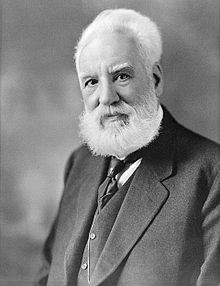Dyslexia is not a disease! The word dyslexia comes from Greek and means difficulty with reading. Individuals with dyslexia have trouble with aspects of reading, spelling and writing. The condition occurs on a continuum from mild to severe and no two experiences of it are alike. Unfortunately, there is no cure for dyslexia since it is neurobiological.
The impact that dyslexia has is different for each person and depends on the severity of the condition and the effectiveness of instruction or remediation. The core difficulty is with word recognition and reading fluency, spelling, and writing.
Some individuals with dyslexia manage to learn early reading and spelling tasks, especially with excellent instruction, but later experience their most debilitating problems when more complex language skills are required, such as grammar, understanding textbook material, and writing essays.
People with dyslexia can also have problems with spoken language, even after they have been exposed to good language models in their homes and good language instruction in school. They may find it difficult to express themselves clearly, or to fully comprehend what others mean when they speak.
Children and adults with dyslexia have to put more energy and effort into reading and are more easily distracted than the average reader. Such language problems are often difficult to recognise, but they can lead to major problems in school, in the workplace, and in relating to other people. The effects of dyslexia reach well beyond the classroom.
Dyslexia can also affect a person’s self-image. Students with dyslexia often end up feeling “dumb” and less


 capable than they actually are.
After experiencing a great deal of stress due to academic problems, a student may become discouraged about continuing in school. However, research suggests that the prevalence of dyslexia is independent of a person’s intelligence. In fact, many brilliant people (for example Albert Einstein, Thomas Edison and Alexander Graham Bell) are said to have had dyslexia.
capable than they actually are.
After experiencing a great deal of stress due to academic problems, a student may become discouraged about continuing in school. However, research suggests that the prevalence of dyslexia is independent of a person’s intelligence. In fact, many brilliant people (for example Albert Einstein, Thomas Edison and Alexander Graham Bell) are said to have had dyslexia.
Dyslexia in children is often detected when they have to read out loud. The child may
 read faster or slower than is typical. When children read fast, they tend to make many mistakes as they often guess the word instead of actually reading it. When children read slowly, this is because they are focusing on the letters within the words. Very often there may be a combination of the two reading speeds for the same child.
read faster or slower than is typical. When children read fast, they tend to make many mistakes as they often guess the word instead of actually reading it. When children read slowly, this is because they are focusing on the letters within the words. Very often there may be a combination of the two reading speeds for the same child.
In addition to reading, children and adults with dyslexia can have difficulty writing. Spelling errors are made more often and especially children need a lot of support in learning the different spelling rules. Spelling words phonetically like ‘frens’ for ‘friends’ or ‘stik’ for ‘stick’ is common. Other writing difficulties which can be related to dyslexia are illegible handwriting and a slow writing tempo.
A student with dyslexia will have a particular difficulty with single word reading. Individuals with dyslexia are often able to access higher level language skills to support their reading of connected text (stories) and this ability to compensate may mask their underlying difficulties with single word reading (which is a neurologically based decoding issue). The central difficulty for a student with dyslexia is to convert (decode) letter symbols to their correct sound and convert sounds to their correct written symbol.
Research has shown that heredity can play a role in the development of dyslexia. When one of the parents has dyslexia, the probability of their child also having dyslexia is 50%. When both parents have dyslexia, the probability increases to 80%.
The primary symptoms of dyslexia are:
- Problems learning the letter sounds for reading and spelling
- Difficulty in reading single words, such as on flash cards and in lists (decoding)
- Lack of fluency
- Reading slowly with many mistakes
- Poor spelling (encoding)
- Poor orthographic coding (understanding the conventions of writing)
Types of dyslexia
The process of reading involves several parts of the brain. Studies have been conducted in which people
who were considered good or fluent readers were given fMRI scans. The scans showed which areas of the brain were active while reading. These studies found that several areas of the brain were consistently activated for the fluent readers, including auditory, visual and language specific areas. The same fMRI scans were done with people who struggle with reading, and the researchers found that one or more of the reading specific areas of the brain were not activated.
Here’s how you can identify if a student has problems with visual and auditory processing:
- They take longer to memorise sight words (50-100 exposures rather than 10-20). When reading, the student may not recognise a word they have previously encountered in the text.
- They may have poor spelling. Without a visual representation in their mind of how a word should look, they have nothing to compare their incorrect spelling against.
- They confuse similarly shaped letters (e.g. p, b, d, q).
- They struggle with phonemic awareness (the sounds and the sequence of sounds within a word):
- Adding sounds that aren’t there (e.g. reading ‘sand’ for ‘sad’)
- Omitting sounds that are there (e.g. reading ‘steam’ for ‘stream’)
- Substituting sounds (e.g. reading ‘fell’ instead of ‘fill’)
- Switching sounds (e.g. reading ‘gril’ instead of ‘girl’)
- They have difficulty recalling information from a story that was read aloud.
- They have difficulty identifying words that rhyme.
Language processing issues are harder to identify. If a student reads accurately but still has little comprehension of what they are reading, they may have language processing issues.
Sometimes a student with good visual processing skills will attempt to memorise every word by sight. This strategy may work well in the earlier years, when vocabulary is limited and words are shorter (e.g. ‘cat’, ‘the’ etc.). At about Year 4 or 5 however, it may seem that the student has comprehension issues, as they start to not be able to decode and comprehend more sophisticated words due to poor auditory processing capability.



 capable than they actually are.
After experiencing a great deal of stress due to academic problems, a student may become discouraged about continuing in school. However, research suggests that the prevalence of dyslexia is independent of a person’s intelligence. In fact, many brilliant people (for example Albert Einstein, Thomas Edison and Alexander Graham Bell) are said to have had dyslexia.
capable than they actually are.
After experiencing a great deal of stress due to academic problems, a student may become discouraged about continuing in school. However, research suggests that the prevalence of dyslexia is independent of a person’s intelligence. In fact, many brilliant people (for example Albert Einstein, Thomas Edison and Alexander Graham Bell) are said to have had dyslexia.
 read faster or slower than is typical. When children read fast, they tend to make many mistakes as they often guess the word instead of actually reading it. When children read slowly, this is because they are focusing on the letters within the words. Very often there may be a combination of the two reading speeds for the same child.
read faster or slower than is typical. When children read fast, they tend to make many mistakes as they often guess the word instead of actually reading it. When children read slowly, this is because they are focusing on the letters within the words. Very often there may be a combination of the two reading speeds for the same child.
